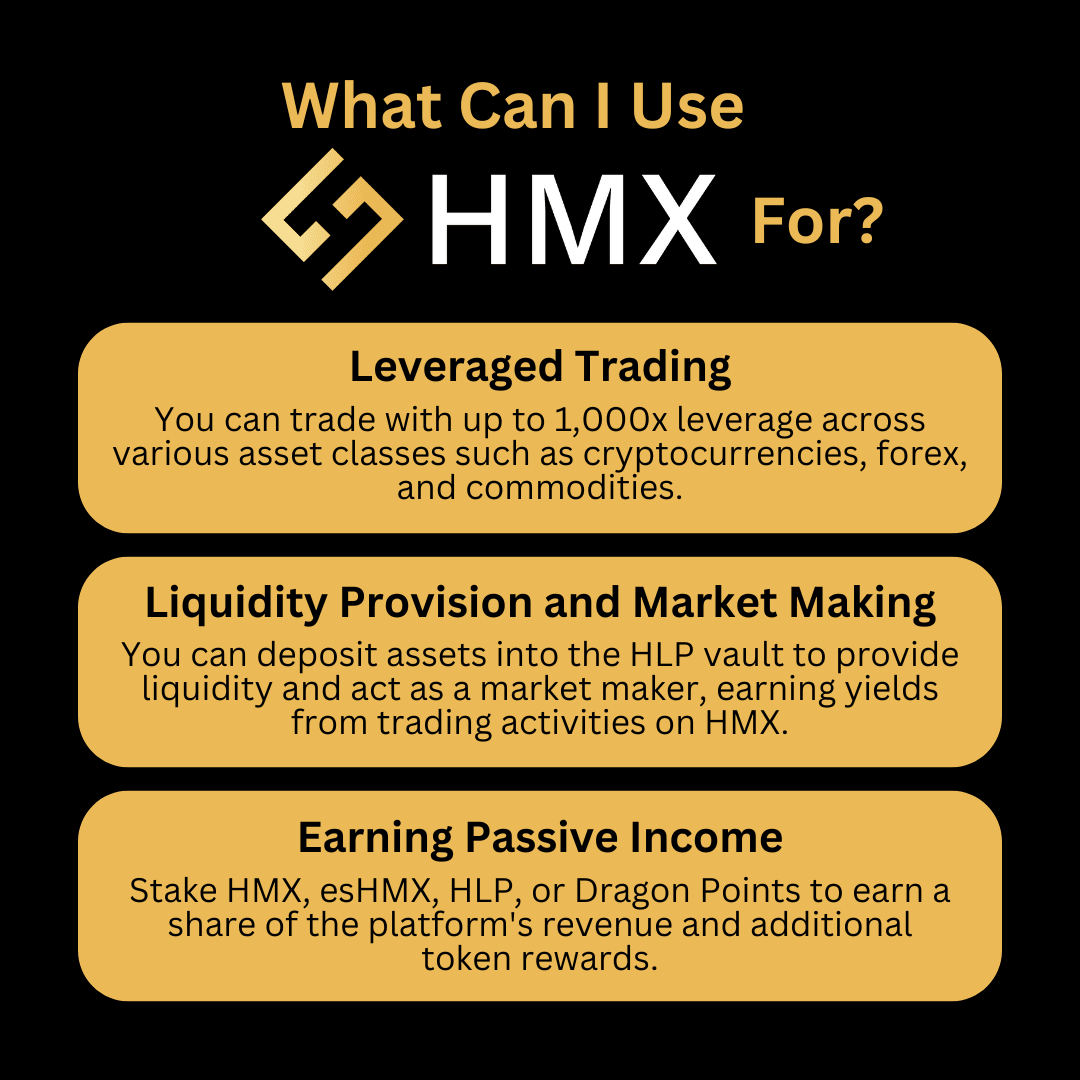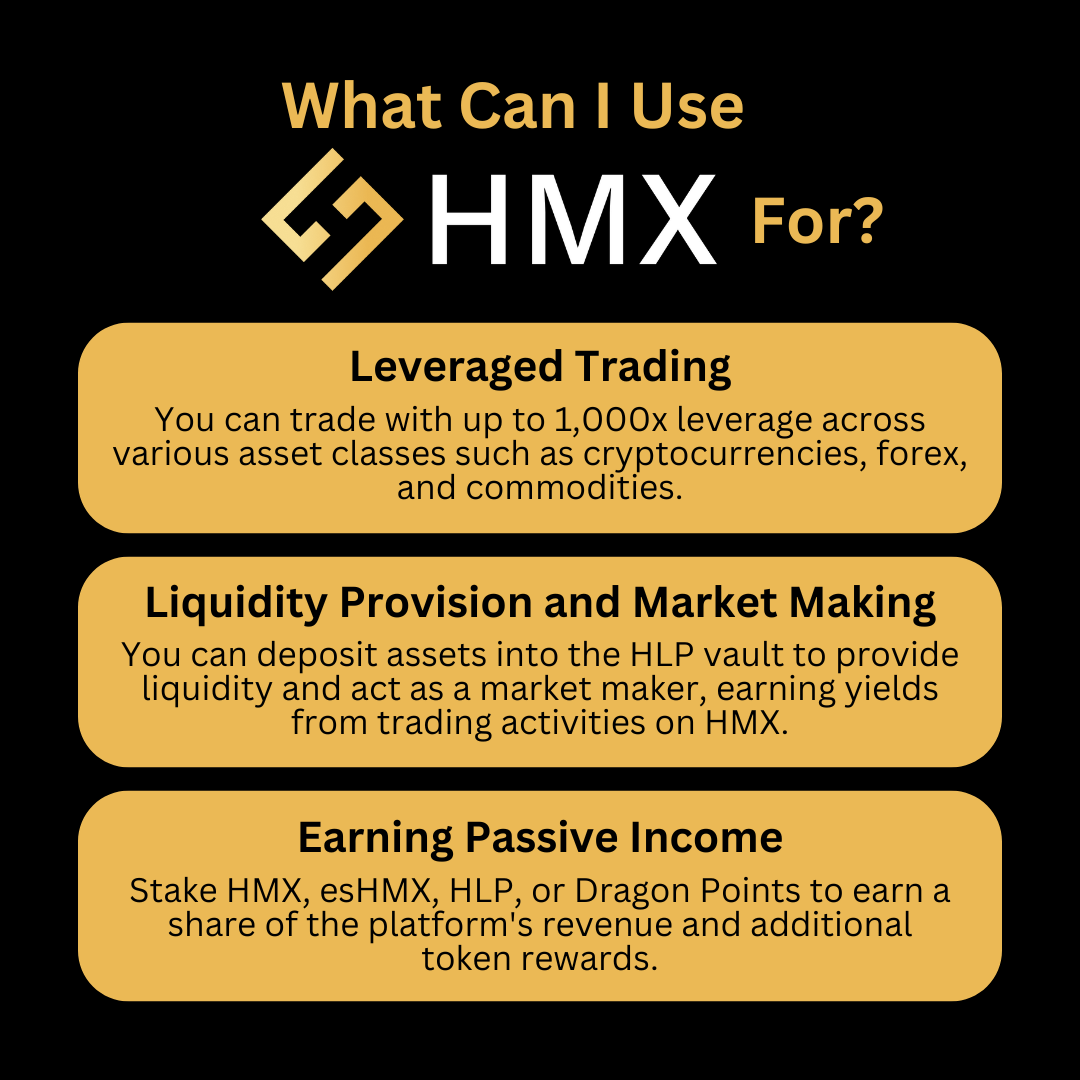
What is HMX?
HMX is a next-gen decentralized perpetual exchange on the Arbitrum network. Here, traders can trade perpetual contracts, betting on the future prices of many asset classes, including cryptocurrencies, forex, and commodities.
HMX offers leveraged trading options to users exposed to these asset classes. Users can trade with leverage up to 1,000x on their long or short positions. This increases the potential for higher profits as well as the risk exposure.
There is also cross-margin trading, which utilizes the entire balance in an account as collateral across multiple positions. That way, it enhances capital efficiency, allowing one position’s profits to cover another’s losses. This reduces the chance of premature liquidations while allowing for increased flexibility in portfolio management across diverse assets.
HMX also accepts various crypto assets as collateral. This reduces the necessity for asset conversion, simplifies portfolio management, and lowers potential conversion costs and slippage. It also improves trading flexibility and efficiency by supporting a diversified investment approach.
All these are possible thanks to the various unique features and components that make up the platform.
What is unique about HMX?

1.HMX
$HMX is the governance and utility token of HMX. It has a total fixed supply of 10 million tokens and primarily serves to allow user participation in decision-making. Holders can also use it to earn a share of platform revenue;
- Users who stake HMX earn a portion of protocol revenue (35% in USDC.e), esHMX token emissions, Dragon Points, governance rights, and trading fee discounts.
2. HLP (HMX Liquidity Provider)
HLP is HMX’s liquidity pool. Users can deposit into the pool to become market makers. In return, HMX allocates the majority of the protocol’s fees to these users along with other benefits. Here’s a breakdown of what HLP liquidity providers earn:
- Protocol revenue (50% in USDC.e)\
- A share of esHMX token emissions
- Full yields from countertrading activities.
3. esHMX
esHMX is escrowed HMX. It is distributed as incentive rewards to those who stake HMX, esHMX, and HLP tokens on HMX. It cannot be traded. However, it possesses the same utilities as HMX once vested.
You can stake HMX to earn protocol revenue (35% in USDC.e), share of esHMX emissions, and Dragon Points.
4. Dragon Points (DP)
DPs are rewards for long-term supporters of HMX. They are designed to offer revenue sharing without inflating the HMX token supply.
You can stake your DPs to earn a share of protocol revenue (35% in USDC), with 1 DP equaling 1 HMX/esHMX in revenue-sharing calculations.
5. Trader’s Loyalty Credits (TLC)
TLC are credits awarded to HMX users based on trading volume and the assets they trade. These credits can be used to earn a share of esHMX rewards; users can exchange TLC for a share of weekly distributed esHMX rewards.
6. Cross-Margin and Multi-Asset Collateral
HMX’s cross-margin and multi-asset collateral feature combines cross-margin trading with the flexibility of using multiple assets as collateral. This allows for a holistic approach to risk management and capital utilization, increasing trading flexibility.
7. Leveraged Market Making (HLP Vault):
HMX introduces a novel model of ‘leveraged market making’ through the HLP Vault. This model enables users to become market makers by depositing assets. They, in turn, earn yields from both GMX and HMX platforms.
8. Advanced Trading Features:
HMX has several advanced trading features, like 1-click trading, on-chart trading adjustments, and advanced order types, which enhance the user experience by providing tools for efficient trading on par with centralized exchanges while retaining decentralization advantages.
All these allow users to participate in DeFi in a variety of ways
What can I use HMX for?

- Leveraged Trading
You can trade with up to 1,000x leverage across various asset classes such as cryptocurrencies, forex, and commodities. This allows you to amplify trading positions to capitalize on market movements.
Leveraged trading on HMX is suitable for various trading strategies and risk profiles.
- Liquidity Provision and Market Making
You can deposit assets into the HLP vault to provide liquidity and act as a market maker, earning yields from trading activities on HMX. That way, you generate passive income from deposited assets while contributing to the platform’s liquidity and market depth.
- Earn Passive Income
Speaking of passive income, there are other ways to earn it on HMX. For instance, stake HMX, esHMX, HLP, or Dragon Points to earn a share of the platform’s revenue and additional token rewards.
Overall, HMX lets you participate in the platform’s growth and success by giving you opportunities to earn a share of its revenue among other incentives.





